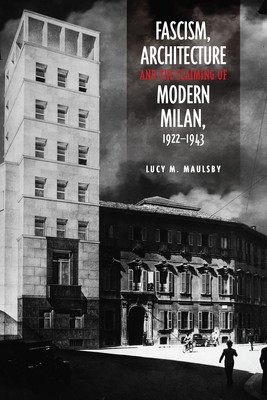
- We will send in 10–14 business days.
- Author: Lucy M Maulsby
- Publisher: University of Toronto Press
- ISBN-10: 144264625X
- ISBN-13: 9781442646254
- Format: 16.3 x 23.4 x 2.4 cm, hardcover
- Language: English
- SAVE -10% with code: EXTRA
Fascism, Architecture, and the Claiming of Modern Milan, 1922-1943 (e-book) (used book) | bookbook.eu
Reviews
Description
Fascism, Architecture, and the Claiming of Modern Milan, 1922-1943 chronicles the dramatic architectural and urban transformation of Milan during the nearly twenty years of fascist rule. The commercial and financial centre of Italy and the birthplace of fascism, Milan played a central role in constructing fascism's national image and identity as it advanced from a revolutionary movement to an established state power.
Using a wide range of archival sources, Lucy M. Maulsby analyses the public buildings, from the relatively modest party headquarters to the grandiose Palace of Justice and the Palazzo del Popolo d'Italia, through which Mussolini intended to enhance the city's image and solidify fascism's presence in Milan. Maulsby establishes the extent to which Milan's economic structure, social composition, and cultural orientation affected Il Duce's plans for the city, demonstrating the influences on urban development that were beyond the control of the fascist regime. By placing Milan's urban change in its historic context, this book expands our understanding of the relationship between fascism and the modern city.
EXTRA 10 % discount with code: EXTRA
The promotion ends in 10d.11:57:15
The discount code is valid when purchasing from 10 €. Discounts do not stack.
- Author: Lucy M Maulsby
- Publisher: University of Toronto Press
- ISBN-10: 144264625X
- ISBN-13: 9781442646254
- Format: 16.3 x 23.4 x 2.4 cm, hardcover
- Language: English English
Fascism, Architecture, and the Claiming of Modern Milan, 1922-1943 chronicles the dramatic architectural and urban transformation of Milan during the nearly twenty years of fascist rule. The commercial and financial centre of Italy and the birthplace of fascism, Milan played a central role in constructing fascism's national image and identity as it advanced from a revolutionary movement to an established state power.
Using a wide range of archival sources, Lucy M. Maulsby analyses the public buildings, from the relatively modest party headquarters to the grandiose Palace of Justice and the Palazzo del Popolo d'Italia, through which Mussolini intended to enhance the city's image and solidify fascism's presence in Milan. Maulsby establishes the extent to which Milan's economic structure, social composition, and cultural orientation affected Il Duce's plans for the city, demonstrating the influences on urban development that were beyond the control of the fascist regime. By placing Milan's urban change in its historic context, this book expands our understanding of the relationship between fascism and the modern city.


Reviews